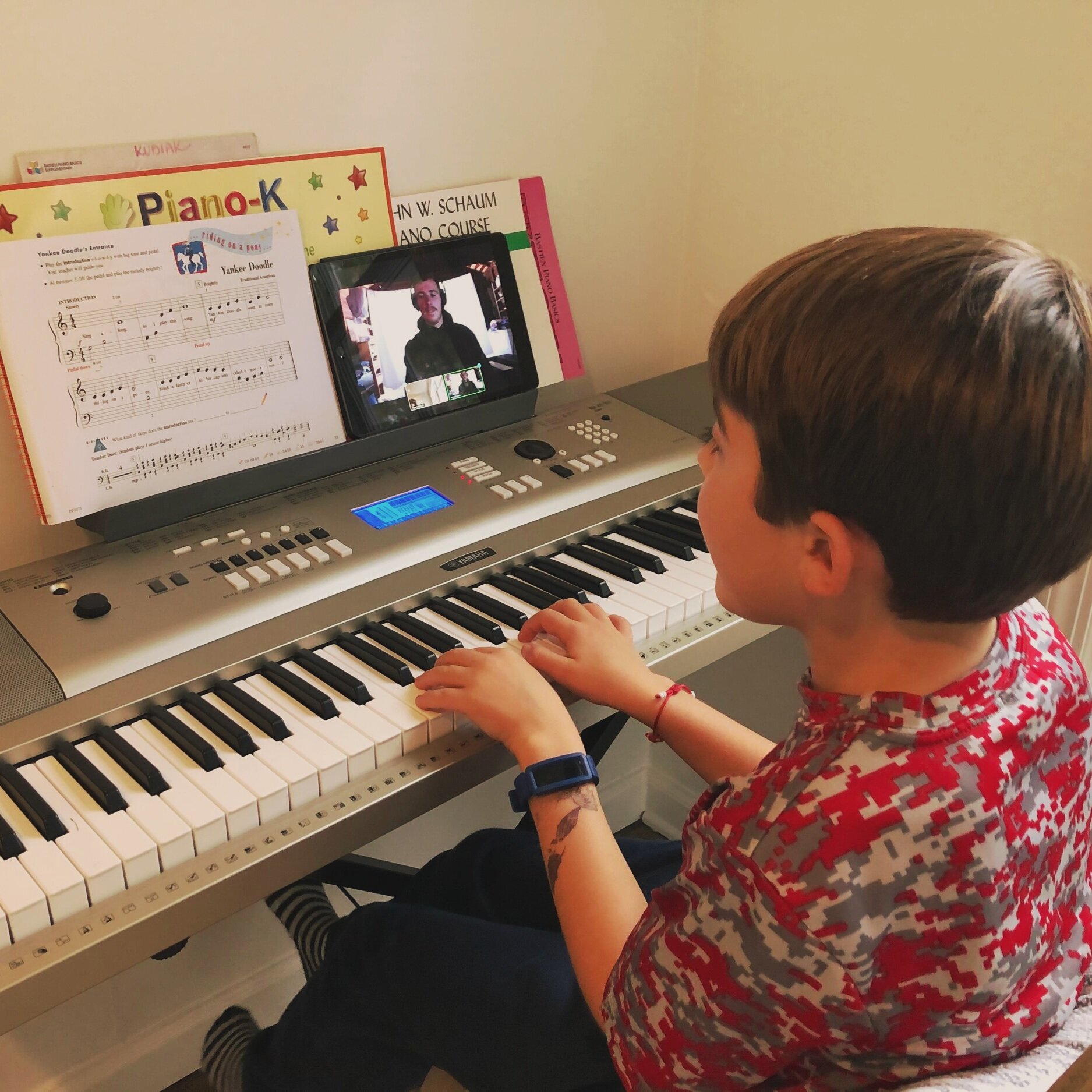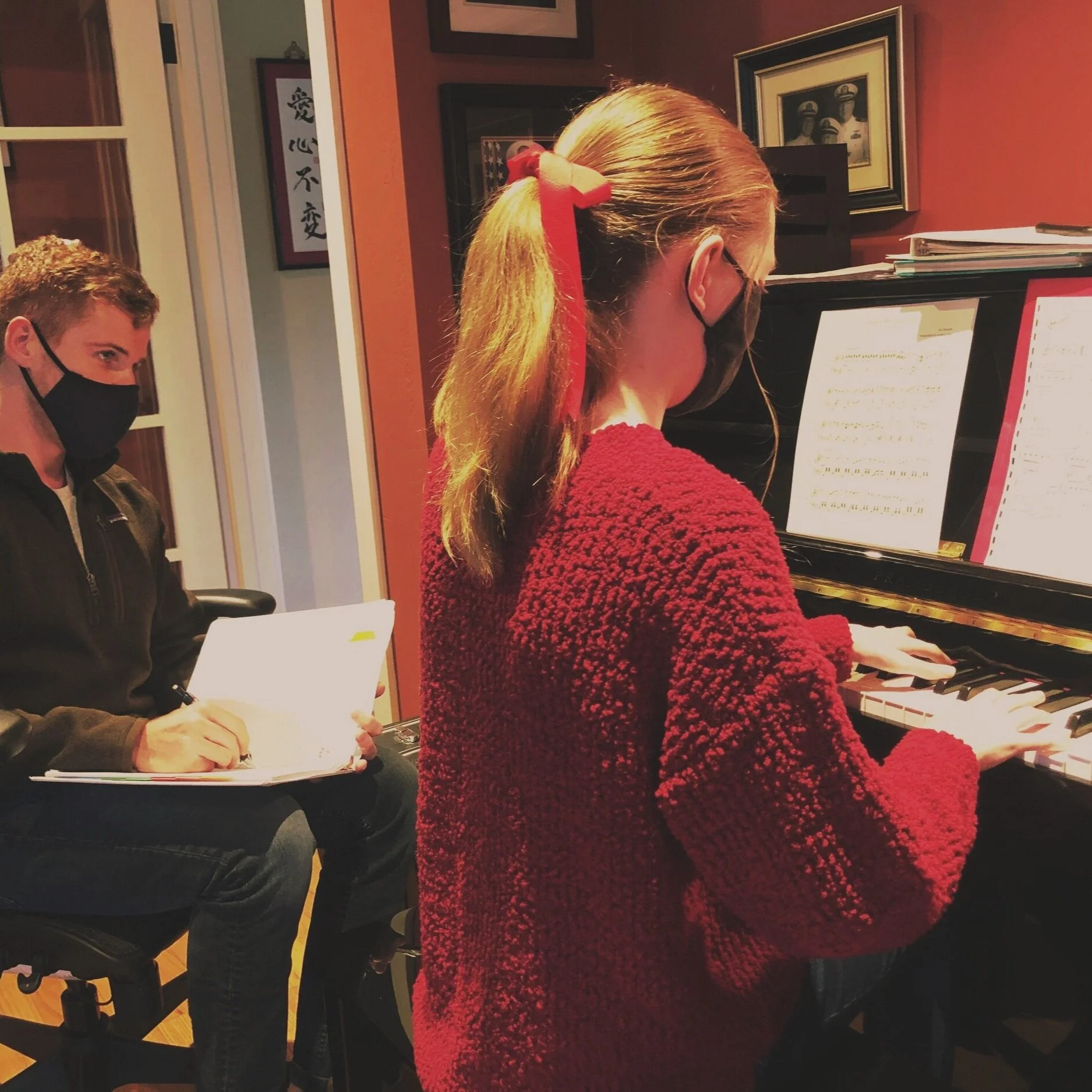Private Lessons
I believe learning the piano should be fun, engaging, and tailored to each student’s goals. Whether you’re playing for personal enjoyment, preparing for exams, or building a solid foundation in classical technique, I adjust lessons to fit your needs. Along the way, we’ll cover the essentials—proper technique, musical expression, sight-reading, ear training, and music theory—while keeping things flexible and enjoyable. My goal is to help students improve at a pace that feels natural, so they stay motivated and excited about playing.
I strive to strike a balance between structure and inspiration in my lessons. I encourage creativity and exploration, helping students develop their own musical style. Whether we’re working on classical pieces, contemporary music, or we go off the rails and create something new, I’ll guide you to play with confidence and artistry. Most of all, I want my students to experience the joy of making music and gain skills they can enjoy for a lifetime.
Curriculum
When it comes down to what should be taught, I don’t stray far from what is proven to work. We focus on the fundamentals; understanding how to play scales and chords are the bedrock of any piano player’s success. All of my students are highly encouraged to purchase a method book from Hal Leonard’s Faber Piano Adventures series. These books offer a steady approach to establishing a students’ playing technique, music literacy, and knowledge of music theory.
Picking music to play will be decided between the students and myself. I will often show my students a variety of songs that I think they should play, spanning a variety of genres, and they are given the final choice to pick one that I recommend. These will often be classical pieces which are known to help develop dexterity and strengthen the muscles in the hand. Students are *usually* not as excited by these songs and will often ask to learn another popular song that they enjoy, which is something I absolutely want to encourage. What’s the point of learning an instrument if you’re not able to play what you want? That being said, I try to encourage a healthy balance of what a student wants and what a student needs.
Practice
I ask my students to spend a minimum of 20 minutes at the piano every day. Developing a new skill takes time, but more importantly it takes repetition. This means taking a small amount of time everyday to practice what they’ve been assigned. This will usually involve a few scales, maybe a page or two from the method book, and then a performance piece. After the assigned work has been completed, I encourage my students to spend some time being creative.
Now, the last thing we want to do is practice our materials incorrectly. It’s not only a waste of time but ensures that the next lesson will be spent trying to undo what has been done. If you are struggling with how to play your scales, click here for some helpful tools. If you are struggling with practicing a song, try to follow these 3 steps:
Identify the time signature and find hand placements.
This is the easiest step to take and will ensure that you start off correctly.Practice hands separately: LH first, RH second.
Student’s who know the song they are about to learn often want to start with the right hand because it’s the melody, then find themselves overwhelmed by learning the left hand. We want to start with our left hand first because it is important to establish what the root notes are for our ears, and the bassline is not as recognizable as the melody. Also because most people are right-handed, it’s nice to give the left hand a head start. Practice both hands individually until you feel comfortable playing along with a metronome.
Practice hands together: Slowly. Playing hands separately is one thing, but playing both parts together is quite another. It requires training your hands to do something new and can often lead to frustration. Often times a student will want to play faster than he/she is ready to play, and this leads to even more frustration. This is why I emphasize the need to play slowly. Slowing the song down to a crawl allows you to teach your hands where they need to be in relation to each other. It may not sound perfect at first, but it will give you an understanding for which notes should fall on which beats.





